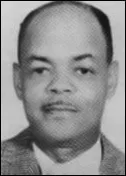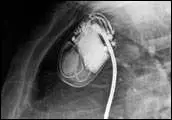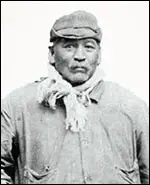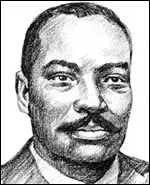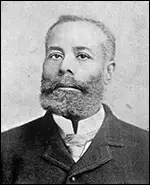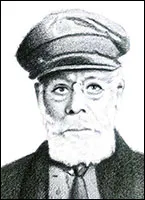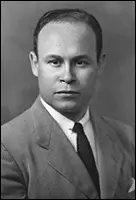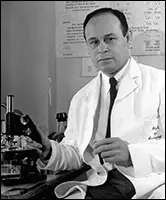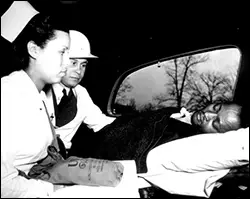BLACK HISTORY MONTH: Lonnie Johnson - SUPER SOAKER
This dude is relatively new on the scene, but he's important for the people who want to PROFIT off their invention in this day and age:
Lonnie Johnson
Recently, Lonnie won over $72,000,000.00 in a vertict over Hasbro for not paying him what he was due!
NEVER let ANYONE rip you off of your DREAMS!!
Remember him the next time you get into a water gun fight!
Link courtesy of BlackInventor.com
============
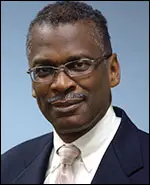 You don’t have to be a rocket scientist to come up with a great idea,
but it certainly doesn’t hurt. For Lonnie Johnson, a lifetime of
achievement and success at various levels on government and private
sector projects could not prepare him for the success the he would
ultimately achieve – by building a better squirt-gun.
You don’t have to be a rocket scientist to come up with a great idea,
but it certainly doesn’t hurt. For Lonnie Johnson, a lifetime of
achievement and success at various levels on government and private
sector projects could not prepare him for the success the he would
ultimately achieve – by building a better squirt-gun.
Lonnie
Johnson was born on October 6, 1949 in Mobile, Alabama. His father
worked as a civilian driver at Brookley Air Force Base, and his mother
was a homemaker who worked part time as a nurse’s aide. His father
taught Robert and his brothers how to repair various household items,
prompting the boys to create their own toys. The boys once made a
go-kart out of household items and a lawn mower motor. Although his
parents were excited about his interest in science and inventing, they
weren’t prepared for the time he decided to experiment with a rocket
fuel he created with sugar and saltpeter which exploded and burned up
part of the kitchen. His talents were more refined when he attended
Williamson High School and in 1968, as a senior, took part in a national
science competition sponsored by the University of Alabama. There he
displayed a remote controlled robot named “Linex” which he built from
scraps found at a junkyard and parts of his brothers’ walkie-talkie and
his sisters’ reel-to-reel tape recorder. He placed first in the
competition and entered Tuskeegee University on a mathematics
scholarship. At Tuskeegee he was elected into the Pi Tau Sigma National
Engineering Honor Society and graduated with distinction in 1973 with a
Bachelor of Science degree in Mechanical Engineering. He continued on at
Tuskeegee and received a Master’s Degree in Nuclear Engineering in
1975.
After graduation, he took a position at the Savannah River National
Laboratory, conducting thermal analysis on plutonium fuel spheres. He
later served as a research engineer, developing cooling systems at the
Oak Ridge National Laboratory in Oak Ridge, Tennessee. Lonnie JohnsonHe
then joined the Air Force and was assigned to the Air Force Weapons
Laboratory in Albuquerque, New Mexico where he served as the Acting
Chief of the Space Nuclear Power Safety Section. In 1973, he left the
Air Force and took over as Senior Systems Engineer at NASA’s Jet
Propulsion Laboratory in Pasadena, California. He worked on the Galileo
Mission to Jupiter, but returned in 1982 to his military career. He
worked at the Strategic Air Command (SAC) facility in Bellevue, Nebraska
and then moved to the SAC Test and Evaluation Squadron at Edwards Air
Force Base in Edwards, California where he worked on the Stealth Bomber.
He also worked as Acting Chief at the Space Nuclear Power Safety
Section of the Air Force Weapon Laboratory at Kirkland Air Force Base in
New Mexico. A Captain, he was awarded the Air Force Achievement Medal
and the Air Force Commendation Medal. In 1987, Johnson returned to his
work at the Jet Propulsion Laboratory where he worked on the Mars
Observer project, and served as the fault protection engineer on the
Saturn Cassini mission project. He later worked as a project engineer
for the Kraft mission which studied asteroids.
Earlier, around 1982, he was working on developing a heat pump that
would work by circulating water rather than expensive and
environmentally unfriendly freon. In his basement at home, he took some
tubing with a specially devised nozzle on the other end and connected it
to a bathroom sink. When he turned on the faucet, a stream of water
shot out of the nozzle across the room with such force that the air
currents caused the curtain to move. His first thought was “this would
make a great water gun.”
Johnson set out to develop a pressurized water gun that was safe enough for children to play with. Water guns at the time very unsophisticated and cheaply made, able to shoot streams of water about eight feet. Using basic tools, he combined a PVC pipe, a piece of plexiglas and an empty plastic soda bottle. His invention worked by partially filling a reservoir tank with water and then using a handle to force air into the chamber. When the trigger was pulled, the air pressure would force water to exit through a narrow hole, launching a blast of water more than 25 feet. He called his invention a “pneumatic water gun” and he continue revising it until it could shoot almost 50 feet. When he had developed a working model (which he called the Power Drencher), he and his partner Bruce D’Andrade began trying to market it while trying to secure a patent for it. They first tried to market it to Daisy Manufacturing, the BB Gun manufacturing giant, but no deal could be worked out after two years of negotiations. After securing the patent in 1991 (the toy was now called the Super Soaker), Johnson was introduced to Al Davis, an executive with Larimi Corp. at a New York City Toy Fair. Two weeks later Johnson was in Larimi’s headquarters in Philadelphia. The executives watching the demonstration all exclaimed “Wow!” Their only concern was whether anyone would pay $10.00 for a squirt gun. After signing a deal with Johnson’s company (Johnson Research and Development Co., Inc.) they would all be in for a big surprise.
Within
a year, all involved knew they had a runaway hit. On the popular
Tonight Show, host Johnny Carson used a Super Soaker to drench his
sidekick Ed McMahon. Within 10 years more than 200 million Super Soakers
had been sold. The gun had gone through many modifications and
expansions, with new product lines, and became the toy of the decade.
Johnson continued inventing and would eventually hold more than 80
patents. For his contributions to science (and in light of his great
success with the Super Soaker) Johnson was inducted into the Inventor
Hall of Fame in 2000. His company has continued to innovate, creating
improved radon detectors, heat pumps and lithium battery products as
well as new toy concepts.
Lonnie Johnson didn’t have to be a rocket scientist to become a worldwide success…. but it sure gave him something to fall back upon.
Just because Black History Month is over doesn't mean that Black History is over.
To me, Black History is 24/7/365!!
More to come, count on it!
Lonnie Johnson
Recently, Lonnie won over $72,000,000.00 in a vertict over Hasbro for not paying him what he was due!
NEVER let ANYONE rip you off of your DREAMS!!
Remember him the next time you get into a water gun fight!
Link courtesy of BlackInventor.com
============
Lonnie Johnson
 You don’t have to be a rocket scientist to come up with a great idea,
but it certainly doesn’t hurt. For Lonnie Johnson, a lifetime of
achievement and success at various levels on government and private
sector projects could not prepare him for the success the he would
ultimately achieve – by building a better squirt-gun.
You don’t have to be a rocket scientist to come up with a great idea,
but it certainly doesn’t hurt. For Lonnie Johnson, a lifetime of
achievement and success at various levels on government and private
sector projects could not prepare him for the success the he would
ultimately achieve – by building a better squirt-gun.Johnson set out to develop a pressurized water gun that was safe enough for children to play with. Water guns at the time very unsophisticated and cheaply made, able to shoot streams of water about eight feet. Using basic tools, he combined a PVC pipe, a piece of plexiglas and an empty plastic soda bottle. His invention worked by partially filling a reservoir tank with water and then using a handle to force air into the chamber. When the trigger was pulled, the air pressure would force water to exit through a narrow hole, launching a blast of water more than 25 feet. He called his invention a “pneumatic water gun” and he continue revising it until it could shoot almost 50 feet. When he had developed a working model (which he called the Power Drencher), he and his partner Bruce D’Andrade began trying to market it while trying to secure a patent for it. They first tried to market it to Daisy Manufacturing, the BB Gun manufacturing giant, but no deal could be worked out after two years of negotiations. After securing the patent in 1991 (the toy was now called the Super Soaker), Johnson was introduced to Al Davis, an executive with Larimi Corp. at a New York City Toy Fair. Two weeks later Johnson was in Larimi’s headquarters in Philadelphia. The executives watching the demonstration all exclaimed “Wow!” Their only concern was whether anyone would pay $10.00 for a squirt gun. After signing a deal with Johnson’s company (Johnson Research and Development Co., Inc.) they would all be in for a big surprise.
Lonnie Johnson didn’t have to be a rocket scientist to become a worldwide success…. but it sure gave him something to fall back upon.
Just because Black History Month is over doesn't mean that Black History is over.
To me, Black History is 24/7/365!!
More to come, count on it!
